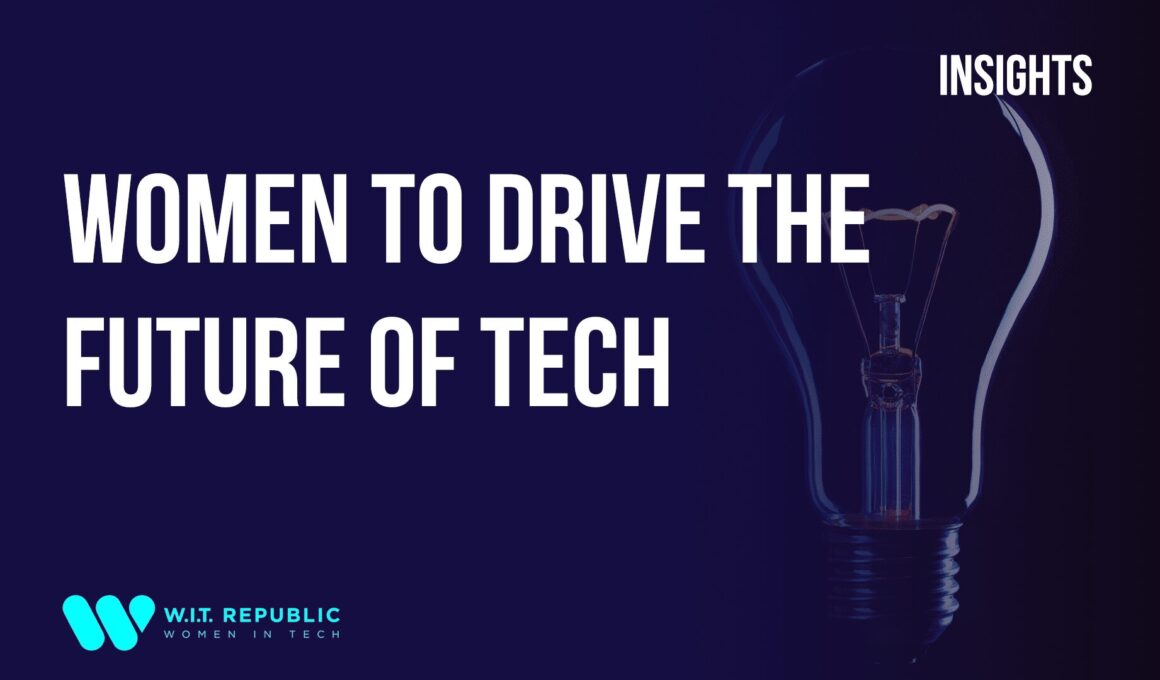Men have traditionally dominated the world of tech. This is changing, however, and by all indications, there is far greater change still to come. As technology becomes more and more intrinsic in our everyday lives, increasing value will be placed on universal design, creating necessity for designs by women, with women in mind.
Seat belts provide a classic example. Once the age of the car was established enough for women to be driving, they almost immediately refused to transport their children—and themselves —at hitherto unknown speeds without better safety measures (e.g., seatbelts). Women’s perspective and priorities made cars safer for everyone.
A more recent and key example comes from Apple, one of the world’s biggest brands. When Apple first released its Health App with the intent of making almost every aspect of your body’s daily functions quantifiable, there was no sign of a menstrual or reproductive cycle tracker—something that women have been doing “analog” (which in this instance means counting on a calendar) since time immemorial.
Once this was pointed out, the company almost immediately rectified the situation, adding these features into the design. Still, it couldn’t hide the fact that it had effectively forgotten about women.
This scenario demonstrates that it makes no difference how much money or resources you have to throw at a problem: Without a varied and diverse team, you can make glaring mistakes and miss huge opportunities. The level to which the STEM industry is male-dominated is the precise size of opportunity for female-designed products.
Diversity increases creativity, and (most importantly to STEM) innovation. Combining this demand for untapped talent in a hugely lucrative sector with the thousands of brilliant girls and women ready to break the poverty cycle in developing nations, creating the potential for a match made in heaven.
It is essential that relevant corporations and organizations are proactive in creating opportunities for the STEM women of the future. And research shows the best way to do this is to start early. A huge 70% of girls are interested in STEM subjects, but 70% of those then self-select away by age 11 as the result of a lack of confidence in math. By supporting young girls’ interest in STEM, educators and parents can provide them with the confidence to explore that huge range of possibilities.
NRG Energy sponsors a competition called FIRST. Students fund, design, brand, build, and program industrial-size robots, which they then compete against each other. The contest makes funds available to children who can’t afford college, providing approximately $50 million of scholarships each year. From this, 33% of female participants have gone on to study engineering, and more than 75% of FIRST alumni are either studying or currently employed within a STEM profession.
Aside from competitions, there are solutions that are applicable at an even earlier age. Some STEM toys already target children at an earlier stage. Although toys that teach coding are nothing new, the majority has been designed by men and therefore tend to appeal to boys. What we need is tech by both women and men.
For example, SmartGurlz offers educational toys targeted at young girls. The dolls highlight the simplicity of play-learning adaptation by combining a tablet app with robotic “dolls” on self-balancing scooters. Young women can be coding within 60 sec. The app features games and requires basic coding to control the robot. It mixes the inspiring and attractive doll-type characters with math, logic and programming skills, all the while keeping a child engaged.
If you take nursing as an example of an industry where the workforce is primarily female, endless possibilities are created when more of that workforce comes from a technological background. Streamlined processes, technological developments, and machine optimization were all inspired by the people doing the work, with technological knowledge and patient care at its heart.
Prior to founding the dating app Bumble, Whitney Wolfe co-founded Tinder. It was her experiences after leaving Tinder and the online bullying she was subjected to while going through a high-profile sexual harassment lawsuit, that planted the seed for Bumble—to stop what happened to her happening to others.
“The reason I started Bumble was because I wanted a solution to the experience I went through and it was something that I could see many women face. So, I built a dating app where only women could make the first move, and we built a brand that was built on the foundations of female first, empowerment, and respect.”
If we return to our earlier examples, it’s clear that encouraging young girls into STEM industries and subjects will benefit not just all women, but everyone. The call out is for companies to act now and benefit later—or risk falling behind and stagnating—while more diverse, vibrant (and feminine) workforces flourish.
To read the full article, click the link below.
